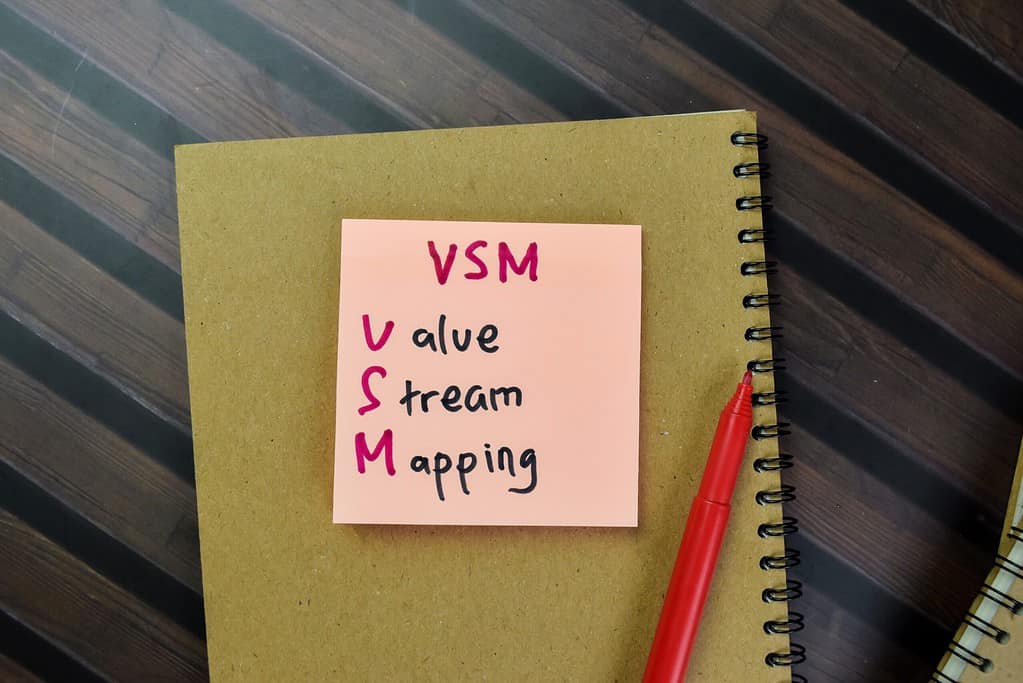Category: Concepts

Practical Tips for Obtaining Unbiased Estimates in Sampling
Updated:It’s not practical to measure every value in a population, whether it be people or all the jars of peanut butter you produced. Taking samples helps. But if your samples are biased and don’t represent the population, then you have a biased statistic or estimator. Let’s learn how you can calculate an unbiased statistic.
Read more »
Managing Work in Process: Best Practices for Optimal Workflow
Updated:Proper WIP management creates both quick wins and long term improvements. Here’s what you need to know.
Read more »
Simplifying Complex Systems with Value Stream Mapping
Updated:Gain a better understanding of value stream mapping and how you can use it in your business. We’ll cover the flow, department interactions, bottleneck identification, and key metrics — as well as a few best practices.
Read more »

How to Map and Optimize Your Value Stream
Updated:Do your processes deliver value for your customer? How do you know if what you do is valued by your customer? Let’s find out.
Read more »
Transfer Function Y=f(X)
Published:Are you ready to dust off your calculus differential equations and Laplace transformations? No? Then we will have to provide a simpler discussion of what a transfer function, or Y=f(X), is all about.
Read more »
Discover the Power of The Theory of Inventive Problem Solving (TRIZ)
Updated:Sometimes you really need to look at problems in a creative and innovative manner. TRIZ is a problem-solving approach that fosters invention for project teams who have become stuck while trying to solve a business challenge. TRIZ (Teoriya Resheniya Izobretatelskikh Zadach) is a problem-solving methodology that was developed in the former Soviet Union by Genrich […]
Read more »
Maximizing Value-Added Work: Driving Efficiency and Productivity
Updated:Being busy and working hard don’t necessarily mean what you are doing will have value to your customer. Let’s see why not.
Read more »
Understanding Team Leaders: Responsibilities and Impact
Updated:In an organization, it is important that there are members of a team to look to when leadership is required. These members may rise to this higher level of responsibility naturally through their skills or personalities, or they may be put in such a position by management.Being a team leader requires more from you than […]
Read more »
Understanding Univariate Analysis: The Basics
Updated:A good introduction to dealing with variables in a data set is to start with univariate statistics. The analysis of this type of data is the simplest. When analyzing variables in a data set, you will conduct either multivariate, bivariate, or univariate analysis. This will be dependent on the number of variables and how many […]
Read more »
Vital Few
Published:When there seem to be more problems than can reasonably be dealt with, which is the right analytical tool to better your chances of spending precious time on those crucial few problems that will have the greatest impact on quality?
Read more »
Know the Benefits and Drawbacks of Unexplained Variation
Updated:In a regression model, there will be an amount of variation that is unexplained by x, unless r squared equals 100%. When you are working with a regression model, there is a chance that you will encounter an amount of variation that is unexplained. This variation, nevertheless, needs to be accounted for and checked to […]
Read more »
Quality Control Just Got Easier: Learn How to Use U Charts
Updated:A U chart is one of four quality control charts that engineers use to track variation in a manufacturing process. The other three typical quality control charts are the p chart (which plots the proportion of defective items, the c chart (which shows the number of defects), and the np chart (which shows the number […]
Read more »
Understanding Thulla and Its Impact on Team Dynamics
Updated:When workers lack motivation, this can be incredibly frustrating. There can be a temptation to address these frustrations using terms that one has heard elsewhere. Take care to keep criticism constructive, to be very aware of how certain terms are used culturally, and to avoid them if they could be inappropriate. When workers have used […]
Read more »
Enhancing Data Visualization Through Stratification
Updated:Webster’s dictionary defines stratification as: formed, deposited, or arranged in stable layers or strata. That’s interesting, but how does it apply to Six Sigma? Let’s find out.
Read more »
Add Business Value to Your Organization with Total Productive Maintenance
Updated:If your machines are not working, you can’t produce products for your customers. Your customers will likely not remain your customers for very long. Let’s see how Total Productive Maintenance (TPM) can keep your equipment up and running. Total Productive Maintenance (TPM) is a maintenance strategy aimed at maximizing the productivity of equipment, machines, and […]
Read more »
System Audit
Published:The system audit is a beneficial and needed tool to evaluate business processes to determine how efficiently they work. This article provides the understanding needed to correctly execute the methodology.
Read more »
Stable Process
Published:What do you picture when you hear the word stable? Words such as steady, consistent and minimal variation may come to mind. These words could also apply to your process. Let’s see what a stable process means.
Read more »
Variables: The Key to Process Enhancement in Six Sigma
Updated:Six Sigma without variables is like a recipe without ingredients. Understanding how variables align with Six Sigma is paramount to the success of any business. Learn how variables can highlight your process’ capabilities and limitations. What are Variables in Six Sigma? Variables are essential to Six Sigma. By measuring, analyzing, and controlling the variables that […]
Read more »
Creating Effective Specifications: What to Include and How to Structure Them
Updated:It is important that you clearly specify your expectations about a company process or product. These detailed expectations are called specifications and serve as a guide as to how well you are satisfying both internal and external expectations. A specification (spec) is a detailed description of the requirements, characteristics, and features of a product, service, […]
Read more »
Maximizing the Telecosm: Strategies for Effective Communication
Updated:Do you remember the days of having to get off the internet when your mother had to use the phone? How about waiting to watch a video while an advertisement seems to buffer endlessly? Advancements in the telecosm have made the amount of bandwidth across all mediums feel infinite in comparison to the early days […]
Read more »
Standard Order
Published:The term standard order refers to the sequence of the runs you will do in your Design of Experiments. The question we will answer is whether to use the standard order or a random order.
Read more »
How to Choose the Right Statistical Test for Your Data
Updated:If you have a question about how your process or organization is performing, statistics will be the methodology for answering those questions. Statistics is the discipline and science used for the collection, organization, analysis, interpretation, and presentation of your data. Statistics usually fall into one of two categories: Descriptive statistics: methods used to summarize or […]
Read more »
Using Variance Inflation Factor to Optimize Regression Models
Updated:The variance inflation factor measures the degree of multicollinearity of multiple predictor variables in a multiple linear regression. Holy smokes, that’s a lot of big words. Let’s find out what it all means.
Read more »